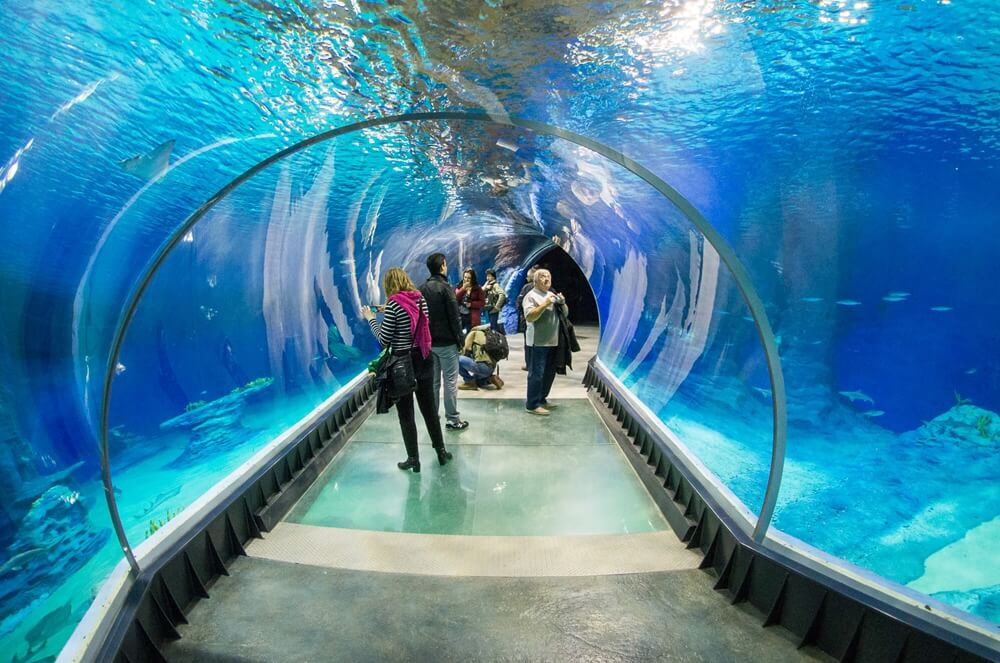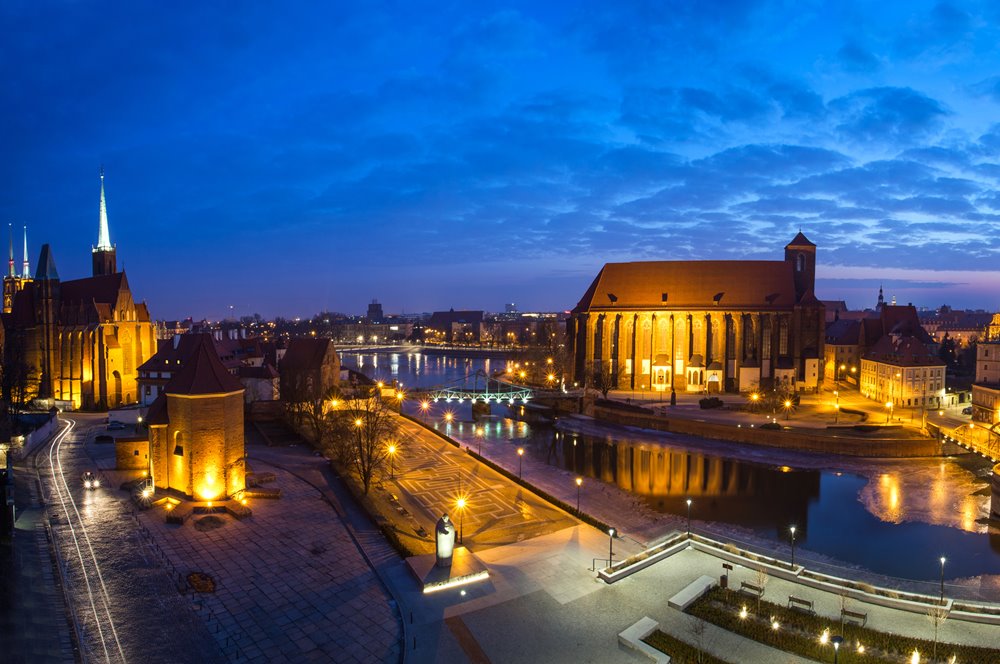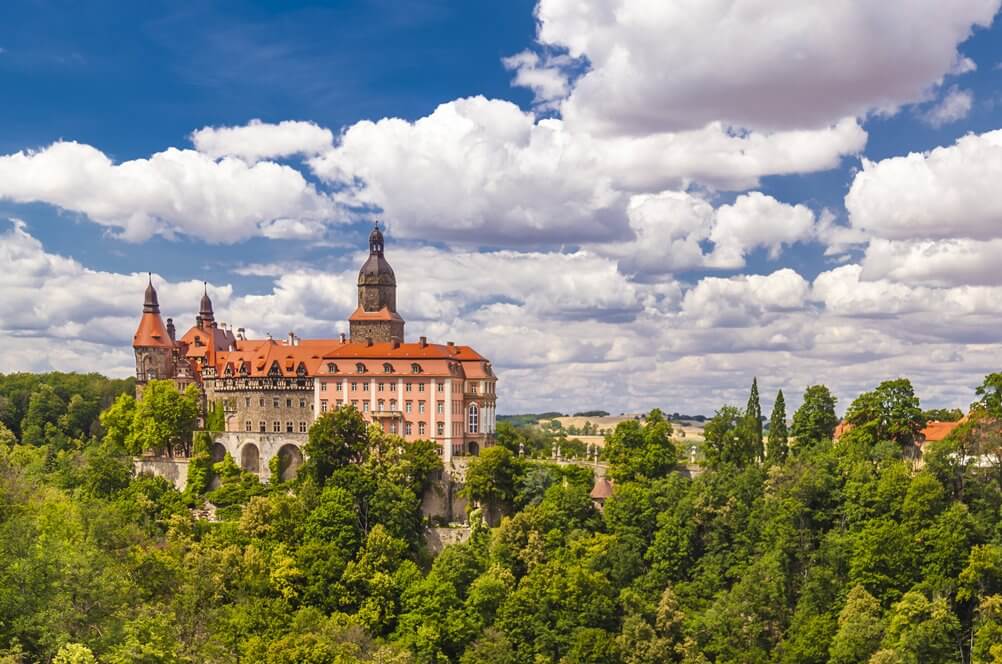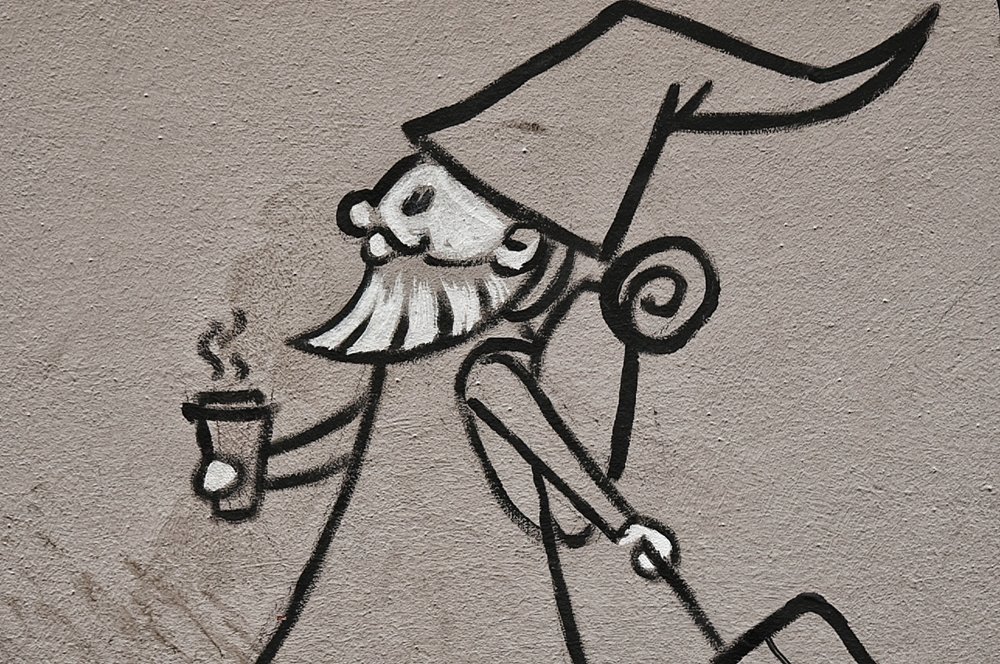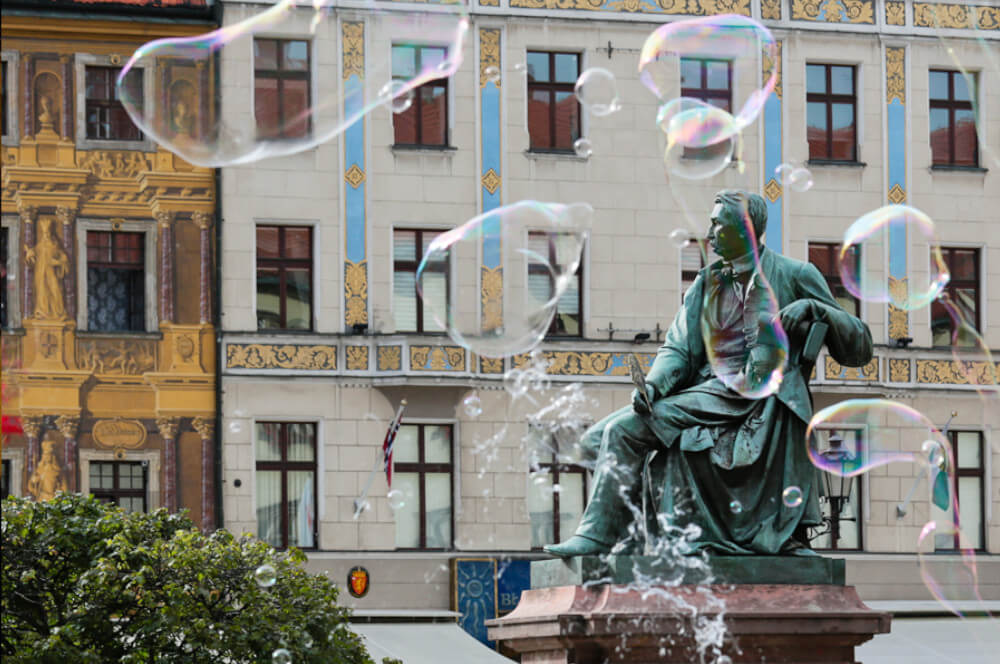As the capital city of the Lower Silesia region, Wroclaw definitely has a lot to offer visiting tourists. The list is long and of course includes major attractions such as Ostrow Tumski with its impressive Gothic Cathedral of Saint John the Baptist, the historic Market Square and the Centennial Hall to name but a few.
However, if you can afford to give yourself an extra day or so in the region, we would recommend spending time to discover the real pearls of Lower Silesia. If you would like to escape from the city, you will find our recommendation for a perfect day out below.


Książ Castle
Książ Castle is the number one attraction in the Silesia region and one of the biggest castles in Poland (after Malbork Castle and Wawel in Cracow). The stunning complex of ducal buildings is located within the protected area of Książ Landscape Park. You will need a few hours at least to visit the castle, even if you are not planning to see all 400 rooms as there’s still plenty to see!
Although the main building was partly destroyed and looted during the last war, today thanks to the splendid renovation work, it’s easy to imagine the castle in all its former glory. The most important room of the castle - the representative Maximilian Hall for example, never fails to impress visitors with its splendid décor and elegant design.
During WWII, the castle and its surroundings were seized by the Nazis and became part of the underground structure of tunnels named Project Riese. Nowadays, for those who like adventure and mystery, there is an opportunity to experience an underground tour of the castle.
After visiting the inside of the castle, we can continue our walk through the spectacular garden terraces of Princess Daisy. Another delight close by and definitely worth a visit, is the ducal carriage house and horse stables built in 1884 and where today you may still sign up for riding classes.
At the end of your visit, cool off after your accomplishments with a break at the café located inside the charming Palm House, which is adjacent to the castle.
Książ Castle is approximately a one hour drive from Wroclaw.
The Churches of Peace in Świdnica and Jawor
Just a few kilometers from Książ Castle, you will find more treasures in the biggest wooden Baroque churches in Europe; the Churches of Peace in Świdnica and Jawor. The churches are always mentioned together as both were founded and named after the ‘Peace in Westphalia’ in 1648, which ended the European war of religions.
At this time, finally Protestants could build their temples, however they could only be constructed of wood, straw, clay & sand and completed within a year. The Catholic rulers of the region at the time were the Habsburg Dynasty. The Habsburgs hoped that the Protestants would not last long in their country if such measures were adopted. Surprisingly, against all odds the churches have survived over 360 years to become the largest timber framed religious buildings in Europe.


The church in Świdnica was built in 1657 and can accommodate approximately 7,500 followers. From the outside the church does not look like a temple, but the beautifully decorated interior, enriched in ornaments with a splendid Baroque altar and organ leaves visitors breathless. The galleries have also survived in their original form.
Outside the church, you will find the old cemetery surrounded by a wonderful collection of 200 year old lime, oak and chestnut trees in addition to many others, providing a real treat for the eyes.
The church in Jawor dates from 1655 and is a true masterpiece of Baroque handicraft, which can be admired by visitors to the present day. The interior décor is unique and has never been duplicated anywhere in the world, gaining the church world-wide appreciation and a UNESCO World Heritage Site listing in 2001.
Fort Srebrna Góra (Silver Mountain Fort)
The fortress in Srebrna Góra is the biggest military fort in Europe and a unique monument of Lower Silesia.
The complex, built in 1777 was supposed to protect the borders between the Prussian and Bohemian kingdoms. It consists of six separate forts in total, with the central main Donjon fort and several bastions accommodating around 5000 soldiers in total.
The fortress was totally self-sufficient. Within its walls, next to the huge ammunition & gun depot, a bakery, brewery, prison, hospital and chapel - everything that made the life of the soldiers more bearable, were to be found.
The fortress was used only once, serving its main purpose during the War of the Fourth Coalition in 1807. On this occasion the fortress was successful in resisting the siege of Napoleon’s army.


During your stay in the largest military attraction of Lower Silesia, you can visit the main Donjon and the underground tunnels, experiencing the atmosphere of a soldier’s life 200 years ago.
You can also learn more about the history of Srebrna Góra and the extraction of silver and lead, by attending the Silver mine exhibition located inside the fortress.
Fort Srebrna Góra is approximately a 1.5 hour drive from Wroclaw.
Grodno Castle and Walim Drifts
A visit to Grodno Castle is a perfect day out for those wishing to escape the city and its crowds.
After driving an hour or so from Wroclaw, you will reach Zagórze Śląskie where you will find stunning medieval Grodno castle, located on top of Choina Mountain (450m high).
Visitors can walk from the parking area to the main gate, which is a relatively easy and enjoyable stroll.
When the castle was built over 700 years ago, it was the biggest construction of its type in Silesia. However, over time it has changed primarily to a ducal residency rather than a military stronghold.
Still incredibly picturesque, Grodno castle offers visitors a remarkable panoramic view from its tower of the surrounding area. Parts of the castle remain original to this day and together with an interesting history, which includes numerous local legends claiming at least one ghost in residence, the castle attracts tourists all year long.


Before we leave the area, there is one more unique place to discover. The Walim Drifts (Rzeczka) were erected during WWII as a part of the secret Project Riese and were one of seven underground constructions built in the Owl Mountains. The project was never finished despite the tremendous work completed by prisoners of war. Today it remains a place of a commemoration and one of the most mysterious military locations in the region.
We recommend ‘sightseeing Wroclaw’ with Meet My City guides.

